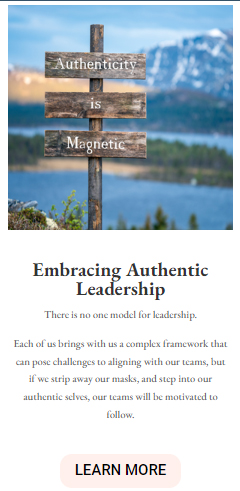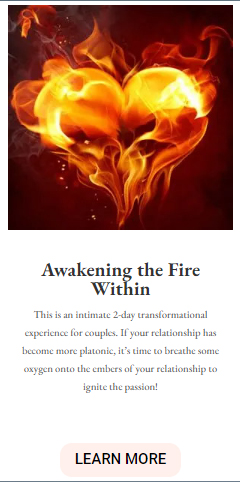Domestic Violence
Be advised: If you are, or anyone you know, is currently in a violent relationship, it is nothing to take lightly. While that there is nothing that says that intimate partner violence must be permanent, the effects of even a single, push, shove or blow, can last a lifetime.
A few statistics
Research indicates that one of every two women will be abused in her lifetime. Of the women who are abused, more than half are victimized prior to age 18. The remainder of these women is assaulted in their adult homes and workday lives. Simple math suggests that one to two million women in the United States being are abused in their intimate partnerships per year. By other estimates, those numbers could soar to as high as 4 million female victims per year at the hands of their intimate partners. Of those that are abused, about 17% report physical and/or sexual abuse by their partner during a pregnancy, and of spousal abuse victims, approximately four women are murdered each day in the United States by their intimate partners.
If you have experienced violence in your intimate relationship, you are not alone.
While, the focus in the research has been on the women who are abused in their relationships, this in no way suggests that men cannot be victimized. It simply recognizes that women are violated far more often than men, and thus that phenomenon has been studied to a much greater extent. With the advent of the Women’s Movement, the installation of Battered Women’s shelters, improved screening protocols in healthcare facilities and the increased legal protection of women in violent relationships, awareness and reporting of domestic violence against women has increased significantly. This has likely allowed for a more accurate statistic or accounting with regards to the number of women victimized each year.
Because men are less likely to identify or report incidents of domestic violence when they have been victimized, our understanding of the scope and incidence involving male victims is minimal at best. Even with the limited resources in use for identifying male victims of violence, research suggests that one in seven men is sexually abused in his lifetime. More recent research posits that if greater inquiry were made on the origin of men’s injuries, accounts of domestic violence against men would increase by 200%: that computes roughly to one in four men being victimized by those they have come to know and trust.
If you are a man, and are reading these words, know that you are not alone, and the violence can, and must, stop. Your gender did not protect you, but with some assistance, you can learn to protect yourself against any further violence.
People tend to think that domestic violence doesn’t happen to folks like them. “That only happens to other people,” is a common thought. But violence happens to people just like us, no matter who we are. Domestic violence is experienced by those in every age group, race, ethnicity, culture, social class and sexual orientation. And, whether the parties involved are married and living in the same home, or just dating more casually, violence knows no boundaries. Intimate partner violence is an equal opportunity phenomenon.
The violent partnership
While there is nothing that excuses intimate partner violence, it is important that we come to understand the elements which increase the likelihood of violence erupting in a relationship. There are both individual and relational factors associated with relationship violence.
Some of the individual characteristics, qualities, or historical elements associated with those who batter and abuse their mates include:
- General acceptance or tolerance of violence against women
- Exposure to violence in their homes as children, either as primary victims or as witnesses to violence against others in the home
- Experience of parental rejection or shaming as a child
- Insecure attachment to mother as a child
- Chronic alcohol use or abuse
- Poor communication skills and low levels of assertiveness
- Chronic anger
Some of the relationship qualities or circumstances that may increase the likelihood of intimate partner violence include:
- High levels of relationship conflict
- Lower socioeconomic status
- Unemployed status of perpetrator of violence
- Large power or status differential between batterer and victim
- Isolation and lack of resources of victim
When one or both partners have become violent, their relationship often shows telltale signs. Some of those red flags may include:
- Constant blaming
- Control and power struggles
- Rigid roles maintained by each partner
- Efforts by one partner to isolate the other
The cycle of violence
Lenore Walker (2000) is one of the foremost experts in the area of domestic violence. Her groundbreaking research with battered women shed light on the silent phenomena and impacted victims, families and support teams.
Walker’s research identified an important pattern that has been named Walker’s Cycle Theory of Violence. Walker suggested that every violent relationship followed certain patterns in order to reduce the tension experienced by one or both parties in the relationship. She posited that the cycle incorporated three phases: 1) tension building, 2) acute battering and 3) loving-contrition.
During the tension-building phase, the conflict and tension gradually rises, accompanied by minor verbal and physical assaults. The victim does all that s/he can to reduce the stress and strain in the relationship, and the fact that s/he is moderately successful leads him/her to believe that s/he has some control over the events which occur in the partnership. Unfortunately, the tension eventually escalates to a point at which the batterer can no longer tolerate his/her internal state, and s/he seeks to divest this tension by acting violently.
The acute battering phase may incorporate any and all forms of violence and will last until the batterer feels adequately divested of his/her internal discomfort. If the intimate partner violence is repeated many times, the victim may become able to predict the point of inevitability: the point from which the violence will happen without direct intervention. Due to the anxiety associated with awaiting this point of inevitability, the victim may actually provoke his/her partner in order to “get the abuse over with”. This is another way in which the victim may gain an inaccurate sense of control within the relationship.
According to Walker’s research, women in violent relationships actually score higher on items which measure locus of control, seeing themselves as controlling events and elements in their environments far more often than women in non-violent relationships!
The third and final phase is the “loving-contrition” phase, also known as the “honeymoon” phase. This phase is marked by the batterer’s remorse, acts of kindness and warmth and the absence of tension in the relationship. Even if the batterer is not outwardly affectionate, as long as s/he is not abusive, the victim may experience this phase as sufficient reinforcement to remain in the relationship. In the event that the batterer does not show signs of remorse nor returns to baseline behavior or attitude, it is an indication of increased lethality.
Are you in a violent relationship?
You might think that the moment an individual is pushed, slapped, or struck in a relationship, s/he exits immediately. Certainly, this might be the healthiest response, but it is still not the most common response. There are many reasons why people stay in relationships that have become violent, not the least of which is distorted perception.
A victim’s perception of the violence in the relationship has a huge impact on whether or not s/he remains in the partnership. Unless a victim is asked to graph the violence in the relationship, it is likely that s/he will vastly underestimate the level and frequency of the violence. Victims typically minimize and deny the violence in their relationships due to shame, embarrassment and even fear that the perpetrator will discover their “awareness” of the violence.
If you are in a violent relationship, you may want to consider the following questions:
- Has your partner become more controlling lately?
- Has your partner become increasingly jealous or accused you of having an affair?
- Has the violence in your relationship intensified or have you experienced more violent incidents lately?
- Has your partner been more violent towards your children lately?
- Does your partner have access to a gun?
- Has your partner been violent outside your relationship?
- Has your partner ever tried to strangle you?
- Do you believe your partner is capable of killing you?
- Has your partner threatened or tried to kill you or others close to you (even pets)?
- Has your partner threatened to harm him/herself?
- Does your partner use drugs or abuse alcohol?
- Are you planning to leave/divorce your partner? When do you think you’d leave? What would enable you to make that decision?
- Is your partner aware of your plans to leave or divorce? If s/he were aware of those plans, what do you think your partner would do?
If you found yourself responding to these questions with “yes” responses, it is likely that the violence is escalating. It is time to seriously consider the idea that this relationship might end with your death, or the death of your children.
It may be time to get out.
Getting out of a violent relationship
It’s as if perpetrators have a sixth sense when they are about to lose access to the targets of their tension-reducing rage. When a victim takes control of his/her life and begins to plan for departure from the violent relationship, the perpetrator seems to gain a heightened awareness, increasing the danger for the victim. As such, it is imperative that the victim have a way to communicate with supportive others to enact a safety plan, as it might become an emergent plan rather than a deliberate one.
If you are in a violent relationship, and you are ready to get out, there are certain items that you’ll want to compile prior to your departure. However, do only what you can without getting caught. Removable ceiling tiles and crawl spaces make fairly good private storage, but remember to replace covers as they were for your own protection.
The following items will prove useful to have upon departure:
- Personal papers (deed to the home, passport, birth certificate, insurance information, divorce decree, custody paperwork)
- Car keys
- Important phone numbers, address book, PDS, or Blackberry
- Medications or prescriptions
- Change of clothes (for self and/or children)
- Toiletries
- Copy of restraining or protective order (if one has been issued)
Exiting a violent relationship takes courage, strength, faith and incredible will. If you are able to take this first step towards health, you will be able to create a new life for yourself. Know that no matter how much you love your partner, your partner will never change until you allow him or her to do so. Stepping out of the violent dynamics not only propel you towards greater health and safety, but will enable your partner to finally question his/her own health, values, and choices.
If you are in a violent relationship and need support and guidance, don’t hesitate to contact us.
You are not alone.
Verbal Violence
What Lenore Walker didn’t study in her groundbreaking research of domestic violence was what Michael Johnson (1995) eventually described as “common couple violence”. While physical and sexual violence is certainly a mainstay in partnerships dominated by “patriarchal terrorists”, it is less prevalent in the majority of relationships. What is far more common is relationships in which one, or generally both, parties express their stress and frustration in the form of verbal or physical violence against one another. And, while it is generally believed that physical violence is significantly more detrimental to the relationship than are verbal insults, the insidiousness of verbal violence in relationship may be vastly underestimated. That old phrase, “Sticks and stones may break my bones, but words will never hurt me” may be one of our greatest myths in relationship.
Clearly, anyone who’s been at the receiving end of verbal violence knows that the sting is really no less than that of a back-hand blow. Even worse, most of us question our reactions to such insults, put-downs, and criticisms. Verbal violence, especially in its more subtle form, is “crazy-making”. Because it does not carry the weight of brute force or strangulation, we question its voracity. Partners with greater insecurity or lower self-esteem even wonder if they’ve done something to bring it on!
Verbal violence, like incest, carries with it not only a deep sense of betrayal, but a pervasive subtlety that may invoke far greater damage than the occasional closed fist. When you don’t see it coming, and you fail to prepare for the blow, the traumatic sequelae (aftermath) can be far-reaching.
Partners in such relationships may become deadened to the cues to some degree.
Because they unconsciously recognize that these behaviors occur in a cycle, they begin to numb themselves to the actual insults. The tension builds, and builds, and when the dam breaks in these relationships, there is an element of surprise, betrayal and resentment which may not have existed in the relationships that Lenore Walker originally studied. In these couples, the eruption may occur, and within days or hours, one or both partners may initiate reparation techniques similar to those described by John Gottman (1999) in his research about successful coupling. And, whether the reparation comes in the form of an apology, a “post-mortem” discussion, or great “make-up sex”, the cycle doesn’t end there. Couples who become desensitized to this level of violence in their relationship cease to even recognize that their behaviors are cyclical. To them, the post-game wrap-up, or mind-blowing make-up sex will resolve it all. They are generally oblivious to the reality that the cycle continues, and is but months, weeks, days or even moments away from that “re-start button”.
If you are in a relationship in which you or your partner, or both of you, do not maintain respect for one another as well as the relationship itself, then it may be time to get some relationship counseling or coaching.

Sage Breslin is a prolific author. Her first book, Lovers & Survivors, as well as her work with Chicken Soup for the Soul, LLC have generated worldwide acclaim. Her second and third books, The Secret to Conception and The Secret to Conception Workbook, have enabled hundreds to resolve fertility challenges. Her fourth book, Daily Pearls: 365 Days of Sage Wisdom, blends Dr. Breslin’s musings with motivational quotes from a wide array of contributors and delivers an unforgettable and moving read. Her narrative storytelling style enables readers to experience life as she has lived it, and delivers the inspirational message so imperative for post-traumatic growth. While her colorful life has imbued her with perspective and insight, Dr. Breslin acknowledges that true wisdom is gained through collective conscious community. Her most recent book takes an even deeper dive into enabling conscious leaders to break through cognitive, emotional and energetic barriers to achieve authentic, empowered leadership. The importance of this form of transformational work is evident: Breaking Through: The Conscious Leader’s and Entrepreneur’s Guide to Amplify Intuition, Clarity, Vision, Motivation and Productivity hit best-seller status within 24 hours!









